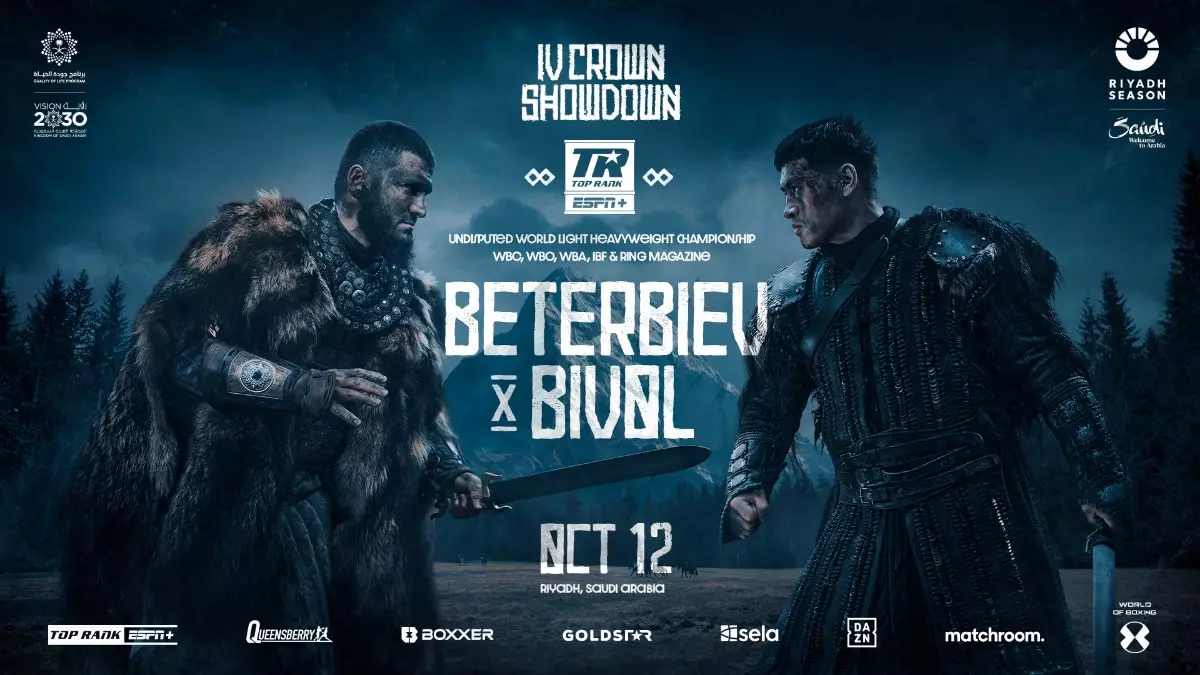The recent announcement that the highly anticipated bout between Artur Beterbiev and Dmitry Bivol will now be featured on DAZN pay-per-view (PPV) has generated considerable discussion among boxing fans and industry analysts. This light heavyweight championship clash was previously available on ESPN+ for subscribers, raising a thought-provoking question: Will boxing aficionados be willing to spend $14.99 to view this fight again on a different platform? This situation presents a complex dilemma for DAZN, particularly in light of the shifting dynamics of viewer consumption in sports.
Initially, the integration of Beterbiev vs. Bivol into the DAZN broadcast was anticipated to bolster viewer interest, especially following complaints from many U.S. fans who felt slighted by its absence from the original PPV lineup. The event’s undercard, featuring less familiar names, failed to captivate the American audience. Bouts such as the now-canceled match between WBC lightweight champion Shakur Stevenson and Joe Cordina may have provided a glimmer of hope, but the unfortunate injury that sidelined Stevenson left fans disillusioned. What remains crucial is whether the appeal of Beterbiev versus Bivol can outweigh the allure of watching it free on ESPN+.
Much to their dismay, U.S. fans find that the undercard lacks significant star power or intriguing matchups that might otherwise incentivize them to purchase the DAZN PPV. Chris Eubank Jr.’s fight against Kamil Szeremeta might serve as a decent background attraction while fans gather snacks and settle in, but it lacks the marquee status to justify a purchase. The undercard’s appeal hinges on exciting confrontations between known boxers; without the presence of established stars or engaging matchups, enthusiasm may wane. The suggestion of pairing popular fighters like Ryan Garcia and Devin Haney, or Jaron Ennis alongside Brian Norman Jr., illustrates a potential route for DAZN to invigorate their PPV offering.
DAZN now faces the pressing challenge of understanding its audience’s expectations and constructing a card that fosters excitement rather than indifference. Boxing fans in the U.S. are particularly discerning regarding spending their money on events that offer limited thrills. Without star attractions to anchor the event, viewers are likely to gravitate toward the free option. The reluctance to pay could signal a larger trend—one in which the practice of charging for PPV may need reevaluation based on the comfort levels and preferences of today’s boxing consumers.
As DAZN grapples with the question of viewer attraction and retention, the Beterbiev vs. Bivol fight serves as more than just a marquee matchup; it encapsulates broader industry concerns about the changing landscape of sports broadcasting. The mixed reception of the undercard highlights the necessity of offering compelling content that resonates deeply with fans. As companies innovate and adapt to the rapid metamorphosis of viewer habits, lessons from this fight could illuminate pathways to enhanced viewer engagement and profitability in an era dominated by streaming services and shifting consumer expectations.

